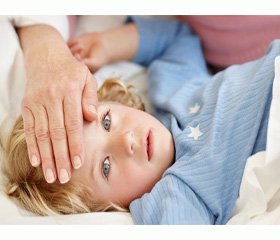Журнал «Здоровье ребенка» 4 (55) 2014
Вернуться к номеру
The comparative characteristic of the solid phases bronchoalveolar lavages and oral fluid in children with acute destructive pneumonias
Авторы: Vasyl Grona, Ievgen Mozhaiev, Tatiana Tananakina, Yuliya Modna - Donetsk National Medical University. Gorky; Government Institution "Lugansk State Medical University"
Рубрики: Педиатрия/Неонатология
Разделы: Справочник специалиста
Версия для печати
bronchoalveolar lavages, cuneal dehydration, oral fluid, acute destructive pneumonias in children.
Introduction
The acute destructive pneumonias (ADP) occupy up to 10% of the total number of pneumonias in children. Increasing the number of acute forms of lung diseases lead to the search for new methods of treatment They require constant improvement of treatment strategy together with antibacterial therapy. The methods of conservative treatment and "small" surgery are widely used for this purpose. Nowadays evaluation of the properties and composition of bronchial fluid carried by different methods. Morphological research is very important for the study of the biochemical composition of fluids. It allows to get an general picture of the patient's health. The basic advantages of this method is the ability to evaluation of minimal changes at the molecular level. Purpose of the work was to study and compare the features of the solid phases bronchoalveolar lavage and oral fluid in children with the ADPs.
Materials and methods
We examined 24 patients (the age from 2–18; the mean age-6.8 years) of contaminated surgery. We identified two groups of patients. The patients of first group (n = 9) had diagnoses - the foreign object of upper respiratory tract. This group was a comparison group (no signs of inflammation). The patients of second group (n = 15) had pulmonary form of ADP. All the children were made a bronchoscopy to obtain BAL to study the crystallization properties. BAL got in patients of the second group twice (before the treatment and during the treatment), in patients of the first group – the one time (before the treatment). Mixed non-stimulated oral fluid was collected from the patients when they spit into special test tubes. The solid phase of BAL was studied by method of cuneal dehydration (Tarasevich & Ayupova, 2003). We scanned the dried droplet(a facies) on the scanner EPSON Perfection V100 and measured using the program Universal Desktop Ruler.
Results:
The facies (BAL and oral fluid) of first group had crystallization with similar characteristics of crystals. The facies of the second group (before the treatment) had another picture - a lot of substances without crystallization and the areas of the pathological inclusions (as in a BAL as in an oral fluid). The facies of the patients (BAL and oral fluid, during the treatment) had a small amount of the crystalline structures without the pathological inclusions.
Conclusion:
So, we can assume that the level of crystalline structures and amorphous aggregates were different in the groups with different degrees of inflammation. We have identified similar morphological characteristics in the solid phases bronchoalveolar lavages and oral fluid in children. It can be used as a qualitative indication of the clinical condition of the organism. This makes it possible to use an oral fluid as an alternative BAL.

